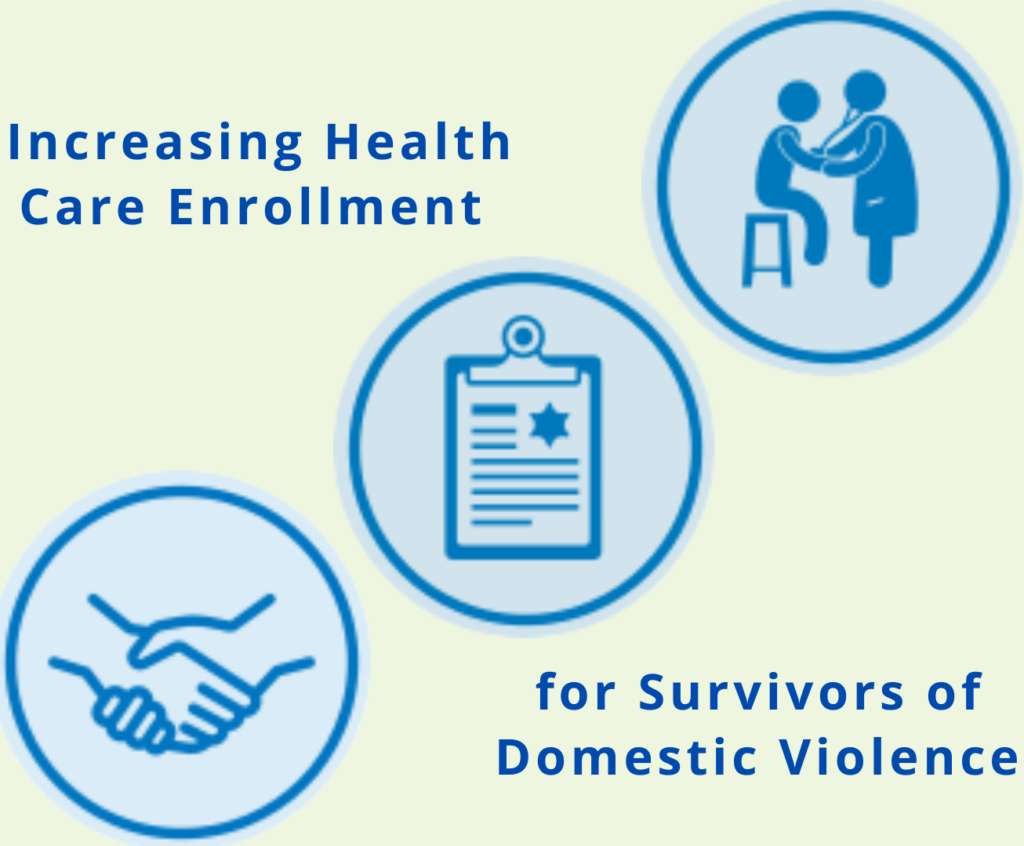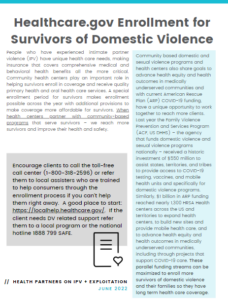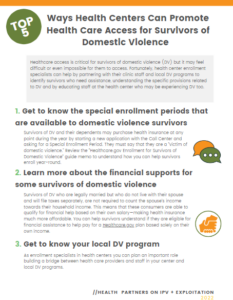
People who have experienced intimate partner violence (IPV) have unique health care needs, making insurance that covers comprehensive medical and behavioral health benefits all the more critical. Community health centers play an important role in helping survivors enroll in coverage and receive quality primary health and oral health care services. A special enrollment period for survivors makes enrollment possible across the year with additional provisions to make coverage more affordable for survivors. When health centers partner with community-based programs that serve survivors – we reach more survivors and improve health and safety outcomes.
Health Partners on IPV + Exploitation developed two resources to support health care enrollment for survivors of domestic violence:
Healthcare.com Enrollment for Survivors of Domestic Violence (A Resource Tool)
This in-depth PDF identifies the unique opportunities for health enrollment specialists and health center staff to increase health access for survivors of domestic violence (DV). The resource also lifts up key actions to develop or expand community-based partnerships, namely with DV advocacy programs. This resource may be helpful for health center staff as they consider program development; health equity strategies; community partnerships; and opportunities to expand health services (mobile health, pop-up clinics, etc.) specifically for survivors of DV and their children. Similarly, community based programs may find this tool helpful as they develop ARP and other health-related programs to increase health access for their clients and staff. The resource identifies the mutual benefits that come from health center and community-based program partnership and offers key resources for program development. (PDF is 7 pages in English).
Five Ways Health Centers Can Promote Health Care Access for Survivors of Domestic Violence (A 2-pager)
This 2-pager summarizes the key actions to promote health center enrollment for survivors of domestic violence; and how health centers may partner with community-based programs, such as DV advocacy programs. This shorter-format may be ideal for staff training; as a guide for staff implementation; and as a handout to share with community partners. (PDF is 2 pages in English)





